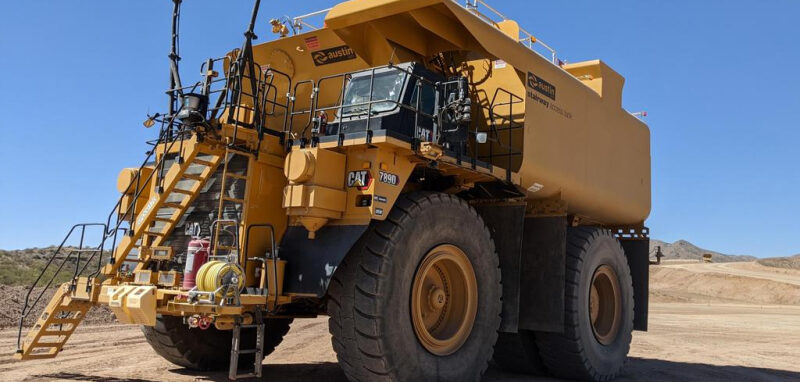Rio Tinto is to deploy fully autonomous water trucks at the company’s $2.6bn Gudai-Darri iron ore mine in the Pilbara region in Western Australia.
Stated to be a world first, the fully autonomous water trucks will be used primarily for dust suppression at the Gudai-Darri site, and Rio Tinto expects that the addition of the vehicles will aid productivity, alongside enabling mining operations to track water consumption digitally and helping reduce the amount of waste produced.
The mining giant worked in collaboration with Caterpillar on development of the three water trucks, which will join a fleet of Caterpillar heavy equipment, including autonomous haul trucks and production drills. An intelligent onboard system can detect dry and dusty road conditions, which will then trigger a water application system to keep the site in good condition.
Due to their fully autonomous nature, the water trucks will recognize when a refill is needed. The vehicles will self-drive to a water stand where they will park, fill up their 160,000-liter tanks and then return to carry out operations. Rio Tinto’s previous water trucks had a tank capacity of 120,000-liters.
Upon deployment, the autonomous trucks will be integrated into Rio Tinto’s existing Autonomous Haulage System, which has improved safety by reducing the risk of injury to employees working near heavy machinery.
“We have worked closely with Caterpillar to safely and successfully deploy the world’s first fully autonomous water truck,” commented Simon Trott, chief executive, Rio Tinto Iron Ore. “Water spraying is a vital part of mining operations, and this new technology will improve productivity and reduce water usage across our operations. The continued expansion of our autonomous fleet helps improve safety and continues Rio Tinto’s efforts to adopt world-leading technology to enhance our operations and realize our vision of making Gudai-Darri one of the world’s most technologically advanced mines.”


